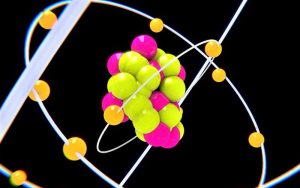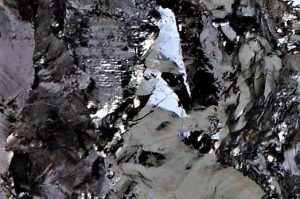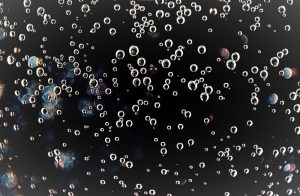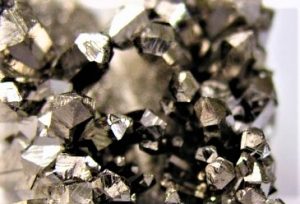Ionic bond
Ionic bond is the type of bond in which electrons can be transferred from one atom to another, leading to the formation of positive and negative ions. The electrostatic attraction between positive and negative ions holds the compounds together. It is also known as an electrovalent bond and is a type of bond formed from the electrostatic attraction between oppositely charged ions in a chemical compound. This type of bond is formed when valence electrons that are located in a more external position of an atom are permanently transferred to another atom. The atom that loses the electrons becomes a positively charged ion or cation, while the one that obtains them becomes a negatively charged ion or anion.

Related topics
Covalent bond, metallic bond, chemical bonds
What is an ionic bond?
The ionic bond is in which atoms have the ability to transfer or share their valence electrons. Some gain and some lose electrons to produce a noble gas configuration.
Characteristics of the ionic bond
Some of the most notable features of ionic links are as follows:
- Ionic bonds have the ability to remain in a solid state when they are at room temperature.
- Their structure is crystalline or transparent.
- They have high melting and boiling
- They are bonds resulting from the interaction between the metals of groups I and II and the non-metals of groups VI and VII.
- They are quite strong and depend entirely on ions.
- They are soluble in water and some other aqueous solutions. This happens because they have an electric dipole that can undo the ions.
- They are excellent conductors of electricity when found in an aqueous solution.
- When they are in the solid state, they are not able to conduct any type of electricity.
How an ionic bond is formed?
In order for the formation of an ionic bond to occur correctly, there must be a reaction or a combination of chemical reactions. The ionic bond occurs when there is a union of two atoms through the ionic bond, which happens when an electron leaves the atom that has the least electronegative charge and becomes part of the electronic cloud of the atom that is more electronegative. Ionic bonds are produced between ions of different sign as charges of different equivalence are attracted.
Classification
Ionic bonds are classified according to the ions their compounds possess. Thus, there are anions and cations.
Anions
Anions are ions with a negative electrical charge. Anions do not have a large number of electrons and are made up of non-metals, although there are a few that are metals and not metals. Some examples of them are:
- S 2- Sulphur.
- SO42- sulfate.
- NO3- nitrate.
- PO43- phosphate.
- ClO3- chlorate.
- ClO4- perchlorate.
Cations
Cations are ions that possess a positive electrical charge. The most common existing cations are formed from metals, although some are non-metals.
- Cr3+ chromium (III).
- Mn2+ manganese (II).
- Co2+ cobalt (II) or cobaltose.
- Co3+ cobalt (III) or cobalt.
- Ni2+ nickel (II) or nickel.
- Ni3+ nickel (III) or nickel.
- NH4+ ammonium.
Properties
Some of its main properties are the following:
- When they remain in a solid state, they do so with quite high melting points.
- They can be soluble in some polar solvents such as water.
- They have a low solubility when in contact with non-polar solvents.
- Ionic bonds can be obtained from metal and non-metal
- They can be found in solid state when at room temperature.
- When in solid state they cannot be able to conduct electricity because their charges are fixed.
Structure of the ionic bond
They are formed by an atom joined to another through a covalent bond, the bonding electrons are shared by both atoms. In the covalent bond, the two non-metallic atoms share one or more electrons, i.e., they bind through their electrons in the last orbital, which depends on the atomic number in question.
Examples of ionic bond
Sodium chloride or common salt is an example of ionic bonding: when it is prepared, sodium and chlorine are combined, the first losing an electron that is captured by the second. In this way, two oppositely charged ions are formed: a positively charged cation and a negatively charged anion. The difference between the charges of the ions then causes an electromagnetic interaction force between the atoms that is able to hold them together. The ionic bond is the union in which the elements involved will accept or lose electrons. In the solution, the ionic bonds can be broken, and the ions are then considered to be dissociated.
How to cite this article?
Briceño V., Gabriela. (2019). Ionic bond. Recovered on 23 February, 2024, de Euston96: https://www.euston96.com/en/ionic-bond/









